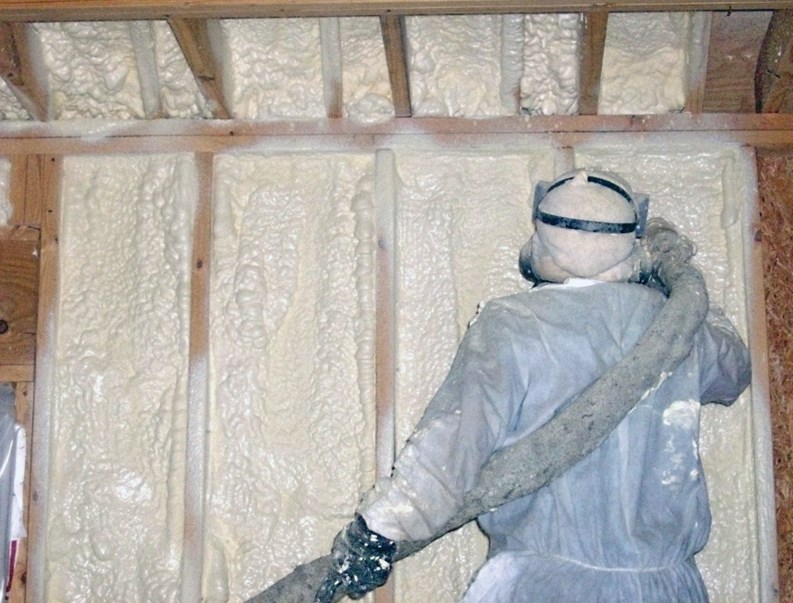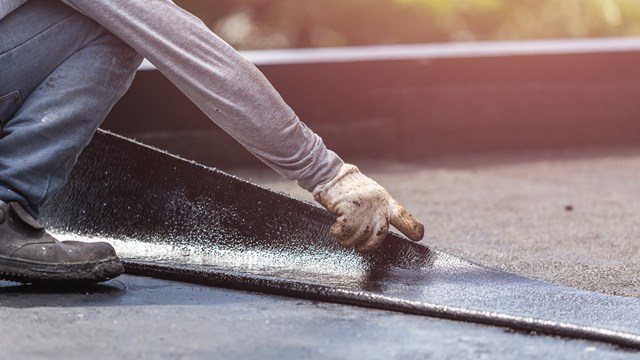The building envelope, as many already know, is a term used to describe the six sides of a building which "envelop" the building (if the building were a perfect cube). The underlying goal of excellent construction is to makethe building waterproof, soundproof, air-proof, pressure-proof, and temperature-proof.
Once this has been accomplished, mechanical systems are installed to allow for regulating the ventilation and air quality of a building. Thus, buildings can be operated in a regulated, controllable fashion. By controlling the air quality, we begin to achieve more efficient and comfortable buildings. However, approaching this goal in new construction is done at significant expense and difficulty. This is even moredifficult when trying to renovate an existing structure.
This article concerns a class of materials which, in my mind, take us closer to the goals associated with 21st century building than any single group available on the market. I am referring to multi-component coating systems: the most common among this class are foam insulations and fast-set spray polyurea floor and foundation coatings.
A Seamless Envelope
The effect of these materials is no less than to achieve a seamless envelope around all six sides of the building structure that has the ability (per the specifications of the architect/designer) to be waterproof, soundproof, air-proof, pressure-proof, and temperature-proof. In short, this class of materials gives us the ability, in one step, to bring us much, much closer to achieving our construction goals.
Over the course the last half century,foam has been used as a specialty product in the building industry and during that time it has been "altered and tinkered with" to bring it to its current state as a safer, more effective alternative to other insulators (e.g., fiberglass and cellulose), says Gene Marckini, a Massachusetts licensed professional chemical engineer and one of the founders of Green Star Foam of Waltham, Massachusetts.
"Both foam and polyurea products have been available for over fifty years," says Marckini. "It's just that now, we finally have the technology, distributionnetwork, and financial incentives to facilitate in-site application. As architects and designers learn more about this class of products and its available characteristics, they will be amazed at the way it fills the needs involved in creating energy efficient construction while maintaining excellent indoor air quality, decreasing noise pollution and improving the overall indoor environment."
What types of foam are available? And how expensive is it, really?
Numerous Varieties
Foam insulation comes in numerous varieties. The four most common types sprayed in the industry are: half-pound, one-pound, two-pound, and three-pound density foams. Half-pound foam that is fully-cured and cut into a 1-cubic-foot piece weighs one half pound. That's how it gets its name. The R-Value of foam is additive. In other words, if foam has an R-Value of 7, that foam applied two inches thick has an R-Value of 14.
Further, foam, unlike other insulators, expands to fill every possible gap, hole, or seam in the cavity to which it is applied. This makes all spray-applied foam an exceptional "air barrier" as well as an insulator.
Half-pound foam is the most common interior insulator used in the residential construction industry, and two-pound foam is the most common interior insulator for the commercial industry.
The reason, according to Marckini, is that the two-pound foam is a muchbetter, more versatile product (so it was being specified directly by architects), but the half-pound foam is cheaper (so it was being specified by general contractors or homeowners), although it is also the kind most commonly installed incorrectly.
In Massachusetts, half-pound foam (in contrast to two-pound foam) requires an additional vapor barrier to meet the residential building code. By Massachusetts building code, it's not allowable to have an insulator without a vapor barrier.
Two-pound foam, says Marckini, is a vapor barrier, is structural (with a compressive strength of 25 psi), and is also a waterproof material. The down side is that the two-pound foam costs over twice as much as half-pound foam.
One pound foam, a hybrid, has similar cost points to the half-pound foam but many of the benefits of the two pound foam (especially an achieved R-value of 5 per inch—whichwould allow one to achieve approximately R-19 in a two by four stud wall.)
What about fast-set spray applied polyurea floor and foundation coatings?
Used in Truck Beds
The best known application of spray applied polyurea coatings are in the installation truck bed linings (e.g., Rhino® linings, etc). Spray applied polyurea coatings are often applied as flooring materials, waterproof roof coverings, and tank liners as well as anything else you can think of. These coatings can be applied to almost any surface (wood, metal, concrete, etc.) offering such attributes as self-flashing, water proofing, solvent-proofing, air-proofing, textures, colors, and designs.
Fast-set polyurea spray coatings and polyurea liners can be applied at temperatures as low as -40o F. Designed to be used on most substrates, fast-set spray polyurea is often the material of choice for a coating or liner for concrete and metal roofs, tanks, decks, parking structure traffic membranes, dampproofing, below grade waterproofing, general containment ponds or lagoons.
Fast-set spray polyurea is a very popular seamless flooring material. It can be applied up to 4,000 sf (square feet) in a single day, in any color, with or without texture. Further, it is ready for use the very next day.
The good news about foam is that various rebates are available for condominiums applying foam to reduce energy use, according to Vincent Graziano, president of Rise Engineering of Cranston, Rhode Island, which performs energy audits for National Grid, NSTAR Electric and Gas, KeySpan Gas, Efficiency Vermont, Baystate Gas, Northern Utilities of New Hampshire and Maine, Public Service of New Hampshire, Connecticut Light and Power, KeySpan, Cape Cod Light Compact, National Grid Gas (RI) and Cambridge Energy Alliance.
After an energy audit is performed, rebates of up to $100,000 are available for each condominium association, says Graziano.
According to Graziano, the amount of the rebate available to each association is related to the following variables: a) the utility company and its current programs, b) the configuration of the energy meters, c) the savings resulting from the rebated activity, and d) the expected life span of the improvement.
Rebate programs are expected to expand over the next few years, says Graziano, and one of the new varieties of foam is a great place for a condominium to improve its energy efficiency and quality of life.







Leave a Comment